Australia So Much to See
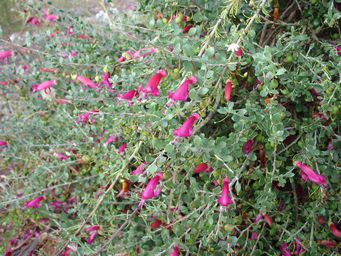
Eremophila maculata, Spotted Emu Bush, Swamp Fuchsia, or Native Fuchsia, with three subspecies each with different foliage.
Hot pink or red tubular flowers with spots through the inside of the flower.
Photo above left is Eremophila maculata subspecies brevifolia,
with shorter rounded leaves.
Photos at right, subspecies uncertain, were seen at Merredin, out of its known range so probably
planted there.
August September
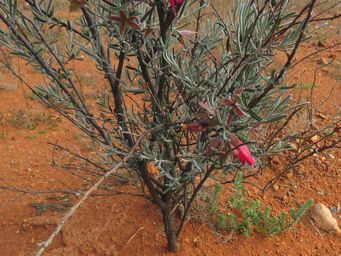
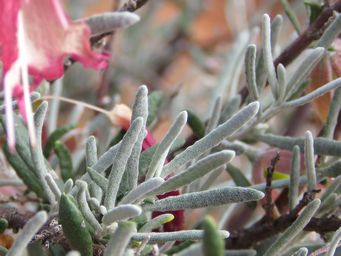
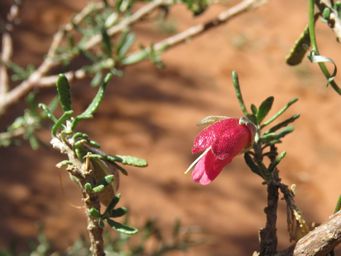
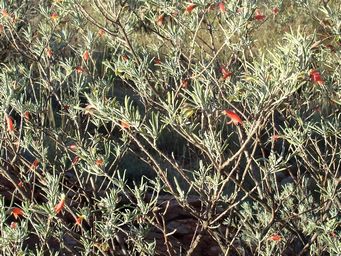
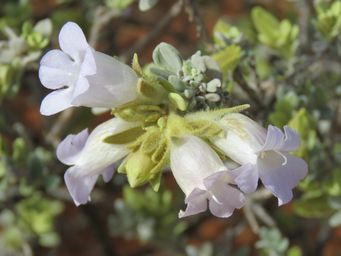
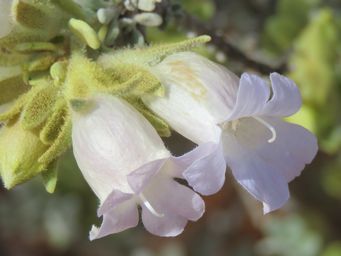
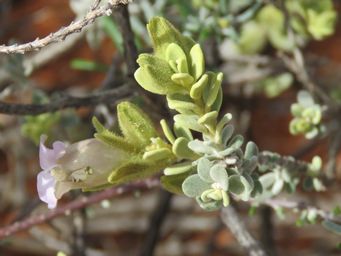

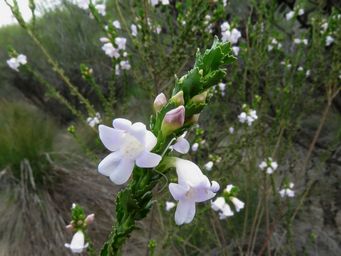
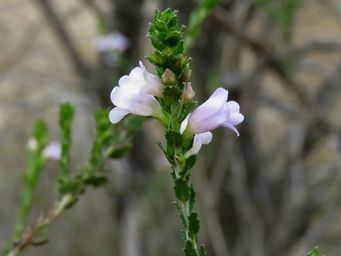
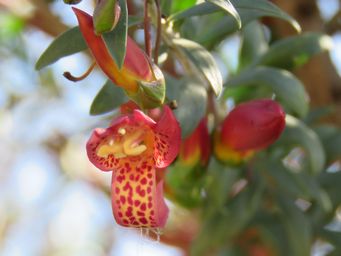
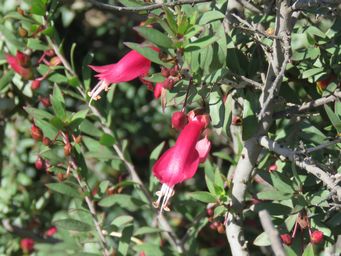
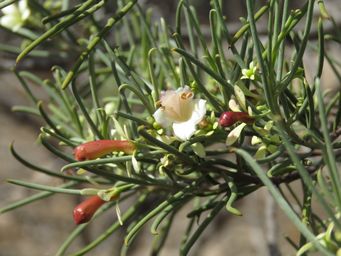
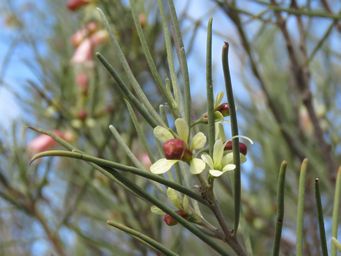
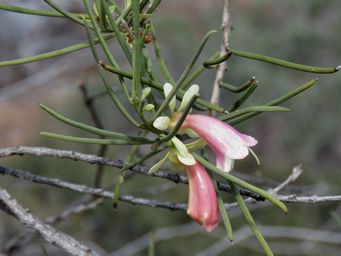
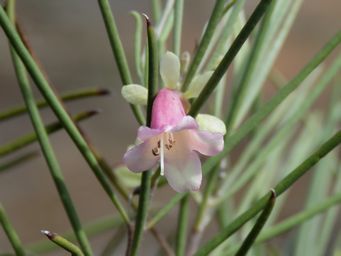
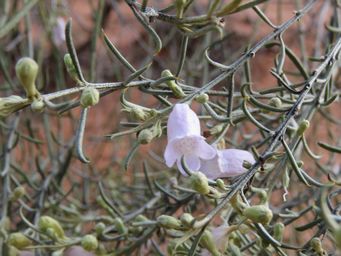
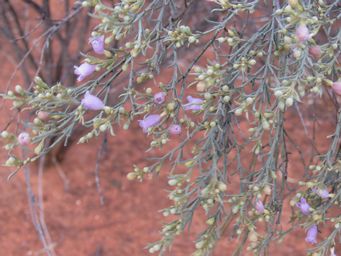
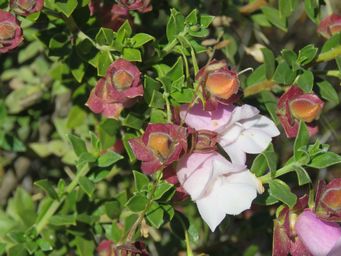
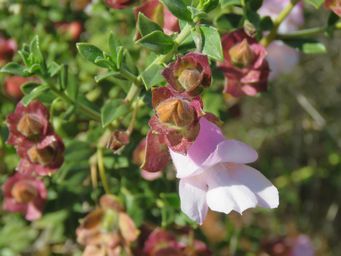
Eremophila jucunda subsp. jucunda
A wide tubular flower, photographed with pale lilac flowers. This species can flower in white,
cream, lilac or purple. Foliage of oval pale green furry leaves.
August
Photographed east of Sandstone, in the Mid West
region, Western Australia. Found mostly in the inland Mid West and into the Pilbara regions.
Shrub at right was photographed in the Ngaanyatjarraku shire near the Northern Territory border in June, and could be Eremophila
latrobei subsp. glabra, but the photo is insufficient to accurately ascertain subspecies.
Eremophila lehmanniana
Pale pink or lilac wide tubular flowers between the leave up the stems. A tall erect shrub, with jagged
edged (toothed rather than serrated) leaves alternating up the long stems.
August
Photographed at Wongan Hills in the shire
of Wongan-Ballidu and Konnongorring in the Goomalling shire. Found from Morawa and Three Springs in the Mid West, south through
the Wheatbelt, and into the Great Southern regions, and in an area to the west of Esperance in the southern Goldfields.
Eremophila oppositifolia subsp. angustifolia, Western Weeooka for this subspecies and common names Weooka, Weeooka, Twin-leaf Emu
Bush, Twin Leaved Emu Bush, Mountain Sandalwood not exclusive to subspecies angustifolia.
A pale pink tubular flower from a
cream or yellow calyx, with buds being red when developing. Shrub has long cylindrical foliage in this subspecies,
with leaves opposite each other. Leaves terminate in a spine, partially hooked.
August
Westonia in the Wheatbelt region,
Western Australia, and found in the Gascoyne, Mid West, Wheatbelt and inland Goldfields regions.
Eremophila scoparia, Broom Bush, Silver Emu Bush, Scotia Bush.
Pale pink or mauve tubular flowers with small spots in throat, on a
many-stemmed bush which can have a weeping habit. Narrow elongated leaves with a silvery appearance are opposite, and terminate
in a hooked spine.
August
Seen near Kalgoorlie, and occurs in the Goldfields and into parts of the Wheatbelt regions.
Eremophila simulans, with three subspecies, these appear closest to Eremophila simulans subsp. megacalyx, priority 3 flora, but the
area found better suits Eremophila simulans subsp. simulans.
A broad tubular flower in pink, mauve or blue. A large calyx is
maroon. Foliage, which widens in the leaf centre then tapers to a point, has fine hairs as does the stem.
August
Sandstone
on the Mid West region, Western Australia, and across all subspecies occurs in the inland Mid West and into the Goldfields regions.
Eremophila latrobei subsp. latrobei, and including four other subspecies, can be known by the names; Crimson Emu Bush, Crimson Turkey
Bush, Native Fuchsia, Latrobe's Emu Bush, Grey Fuchsia Bush, Warty Fuchsia Bush, Warty-leaf Eremophila, Georgina Poison Bush, Poverty
Bush.
Narrow tubular flowers which may be red, pink, mauve or blue on a long stem that curves downwards then up a little with the flower. An upright shrub with long narrow flat leaves which have bumps on them.
August
Photographed at Agnew in the Leonora shire and
in the Sandstone shire. Occurs through the Pilbara and southern parts of the Kimberley, the Gascoyne, Mid West, and Goldfields
regions, and very limited occurrences in the inland northern Wheatbelt. NOT found in the Perth/Peel, Great Southern, or South
West regions.